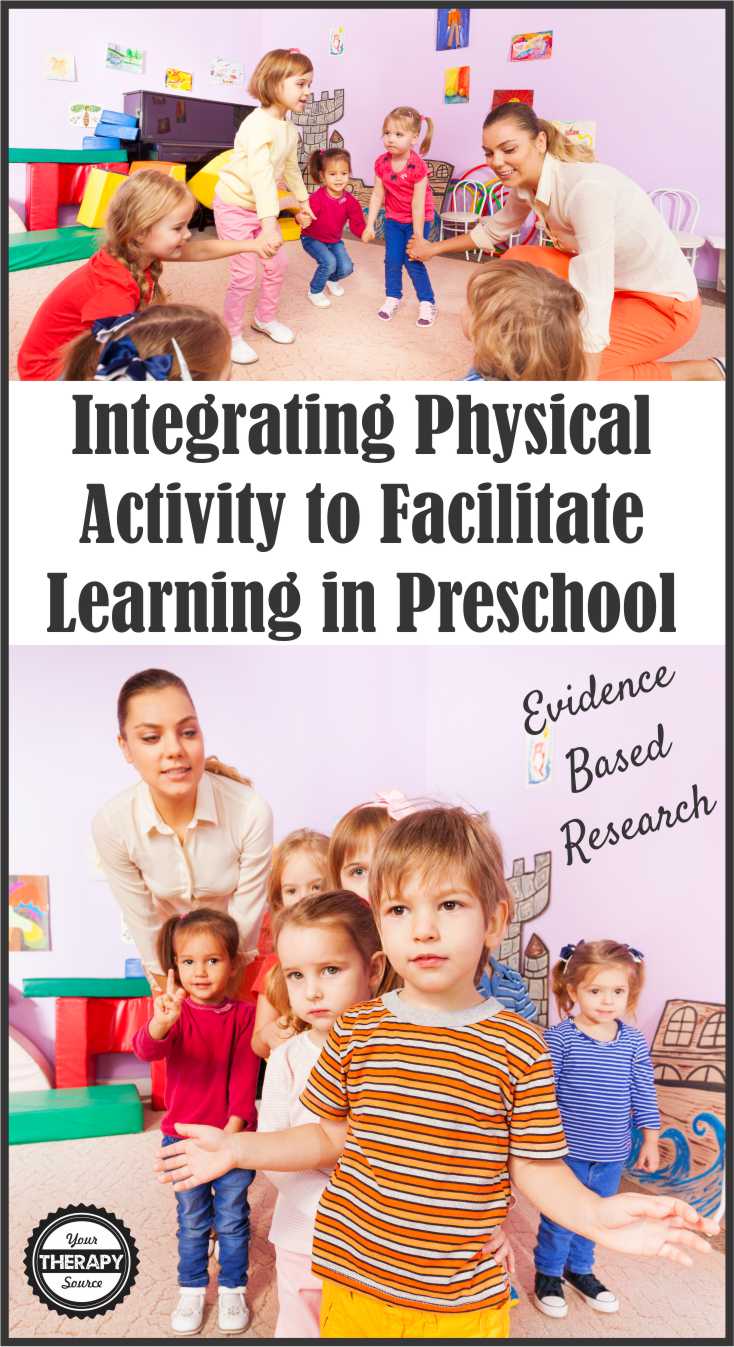Integrating Physical Activity to Facilitate Learning – Evidence Based Research
 Integrating Physical Activity to Facilitate Learning – Evidence-Based Research
Integrating Physical Activity to Facilitate Learning – Evidence-Based Research
Research indicates that integrating physical activity to facilitate learning is beneficial in the classroom environment. Two recent studies were performed with preschool students to compare lessons with physical activity and without physical activity.
One study included 90 preschool-aged children who were randomly assigned to an integrated physical activity condition including task-relevant physical activities, a nonintegrated physical activity condition involving task-irrelevant physical activities, or a control condition (conventional sedentary style of teaching). The results indicated that immediately and after 6 weeks, learning outcomes were highest in the integrated condition and higher in the nonintegrated condition than in the control condition. In addition, the preschool children in the integrated condition scored higher on the perceived enjoyment of learning.
In a separate study, 87 preschool children participating in a geography lesson were randomly assigned to an integrated physical activity condition, unintegrated physical activity condition and a control condition (sedentary instruction). The results indicated that both physical activity conditions had higher retention levels of the material. Once again, the children in the integrated condition had higher ratings for enjoyability of the lesson. Both physical activity conditions had higher levels of moderate to vigorous physical activity.
Therefore, both studies indicated that integrating physical activity to facilitate learning in a preschool classroom resulted in improved learning outcomes versus a conventional sedentary lesson.
References:
Mavilidi, M. F., Okely, A. D., Chandler, P., & Paas, F. (2017). Effects of Integrating Physical Activities Into a Science Lesson on Preschool Children’s Learning and Enjoyment. Applied Cognitive Psychology.
Mavilidi, M., Okely, A., Chandler, P., & Paas, F. (2017). Infusing task-relevant physical activities into the classroom: effects on preschool children’s geography learning. Journal of Science and Medicine in Sport, 20, e109.
Here are 3 resources that encourage movement and learning:
- The ABC’s of Movement®- Combine Movement with Literacy – The ABC’s of Movement® is a pdf document of educational flash cards that combine movement with literacy development. Kids love these colorful flash cards that merge learning the alphabet with twenty six fun, noncompetitive movement activities. Designed for children of all abilities from preschool through 2nd grade, these flash cards were developed by a physical therapist with learning and physical development in mind. Ideal for home and school use. These bright, bold letters and full color photographs of children make learning easy and fun!
- Movement Flashcards – Movement Flashcards digital download includes 10 aerobic exercises with flash cards templates. Students can get physical activity while reviewing material. The 10 aerobic activities include: run in place, jumping, hopping, squats, lunges, skipping, twists, cross crawls, jumping jacks and marching. Each page includes a picture image of the aerobic exercise along with a blank template to type in 18 flash cards. You choose what to work on for academic material.
- The ABC’s of Active Learning – Exploring educational concepts through movement and multiple senses give children opportunities to learn in ways they understand. The alphabet activities from A to Z are a collection of activities that can be used with children of all abilities.

 Integrating Physical Activity to Facilitate Learning – Evidence-Based Research
Integrating Physical Activity to Facilitate Learning – Evidence-Based Research



